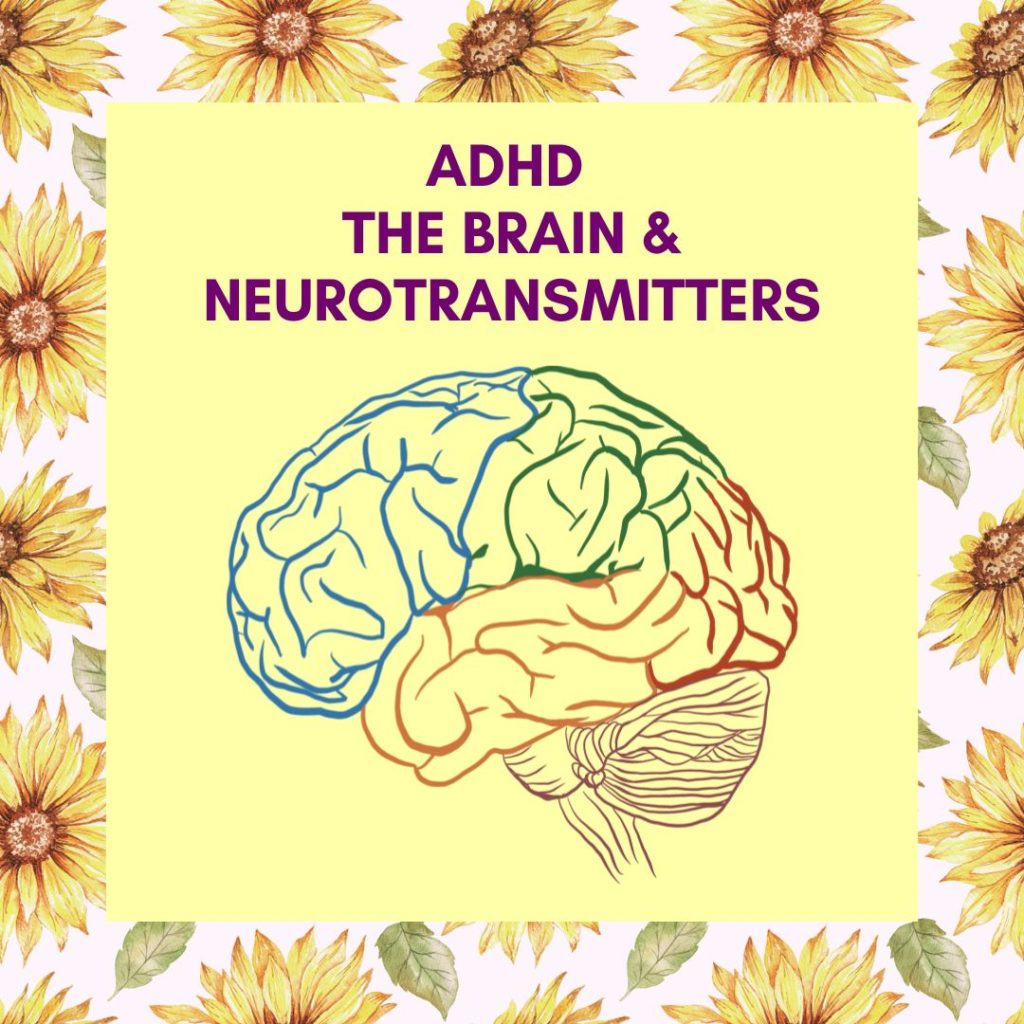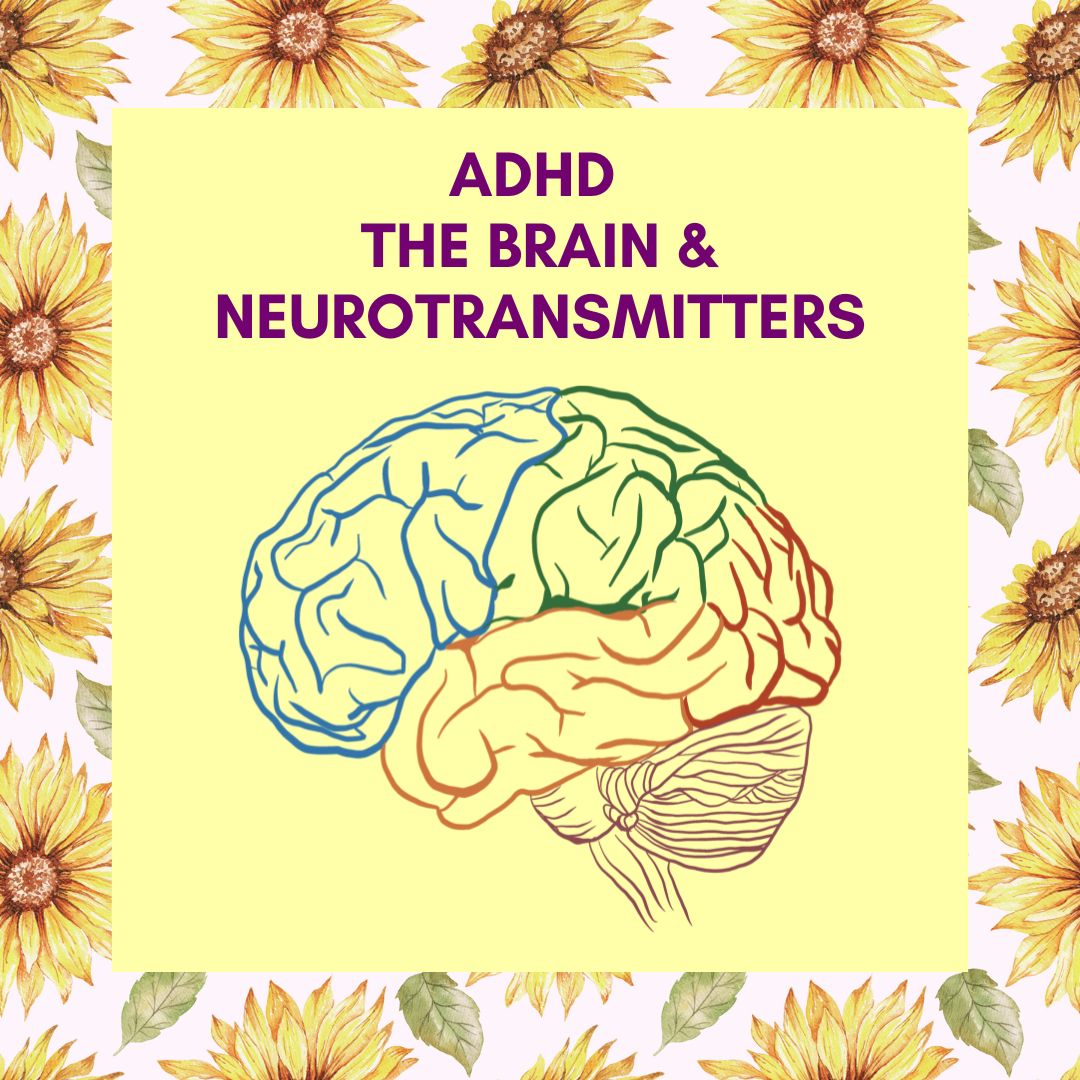What’s happening in that ADHD Brain?
The ADHD brain is a very complicated little operating system. There are millions of cells in every area of the brain, and each area is tasked with being in charge of a specific bodily function. There are areas assigned to things like breathing, seeing, hearing, interpreting, carrying out tasks – basically every thing we do, all day and all night – some area of our brain is in charge of that thing.
In order for the areas of the brain to send their signals to the appropriate parts of the body – there are circuits – pathways – that take the information from one brain region to another. The information that travels along the pathways are called neurotransmitters and scientists have identified somewhere between 50 and 200 of them!
Each neurotransmitter talks to the next one in the pathway, but they can’t play leap frog. So if one pathway is blocked, the neurotransmitter stops. Each neurotransmitter will only respond to the neuron it is meant to attach to. When the neurotransmitter finds the right neuron, they join together and stimulate the neuron to action.
What does that have to do with ADHD?
As far as we understand it so far, ADHD was the first disorder found to be the result of a deficiency with a specific neurotransmitter.
In ADHD it’s norepinephrine. Norepinephrine is created and managed within the brain. Each norepinephrine molecule contains dopa – this turns into dopamine which in turn is converted into norepinephrine.
Based on the science we have now, ADHD neurotransmitters are impaired in four particular brain areas.
The Frontal Cortex
(The front cortex takes charge on high level functioning – attention, organization and executive functions. If the frontal cortex is impaired it can cause problems with inattention, focus, time problem solving and more.
The Limbic Cortex
The limbic system’s control area is emotions – particularly regulating our emotions. Deficiencies here result in emotion dysregulation, explosive behavior, volatility, boredom, etc.
The Basal Ganglia
The basal ganglia is up next – this guy regulates the communication within the brain. All regions send information to the basal ganglia and then rerouted to the right area of the brain. When their are deficiencies the basal ganglia may short circuit leading to forgetfulness, impulsivity, and inattention.
The Reticular Activating System
Last but not least is the Reticular activating system. I’ve had ADHD my whole life and never heard of this! This is the messenger guy! He takes the information needed and runs back and forth to other areas of the brain. Deficiencies here cause the poor guy to lose his train of thought, become impulsive, or hyperactive.
Much of this still is being studied and figured out. As of this writing, scientists don’t know for sure which brain region is the larger source of ADHD symptoms and also can’t determine if the problem lies with a shortage of norepinephrine, dopamine or even dopa.
So doctors and clinicians use clinical experience, rating scales, and trial and error when determining appropriate medication needs. Hopefully with advances being made every day, doctors of the future will be able to pinpoint more specific areas of deficiency to make medication and treatment options much more likely to be effective.
While we are waiting for that time, we have much to do in the way of learning, understanding, and educating about ADHD and it’s effects.
I found comfort myself in recognizing how busy my brain is and how it’s doing a great job of compensating for those deficiencies.
I also strive to remind people that having ADHD doesn’t mean we are broken, or need to be “fixed” or “cured.” It means with think differently, we may learn differently, we may socialize differently.
I’m a whole, perfectly imperfect person – and so are you!
Don’t Delay Joy!




Wow! That was an enlightening blog post. I found it very interesting and definitely learned a thing or two. It is also good to know there is hope for better treatment some day. Thanks so much!